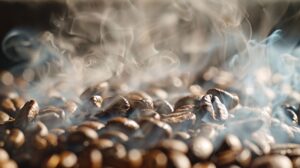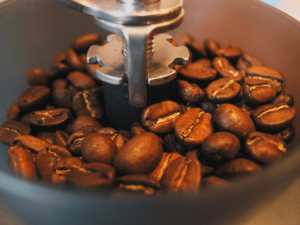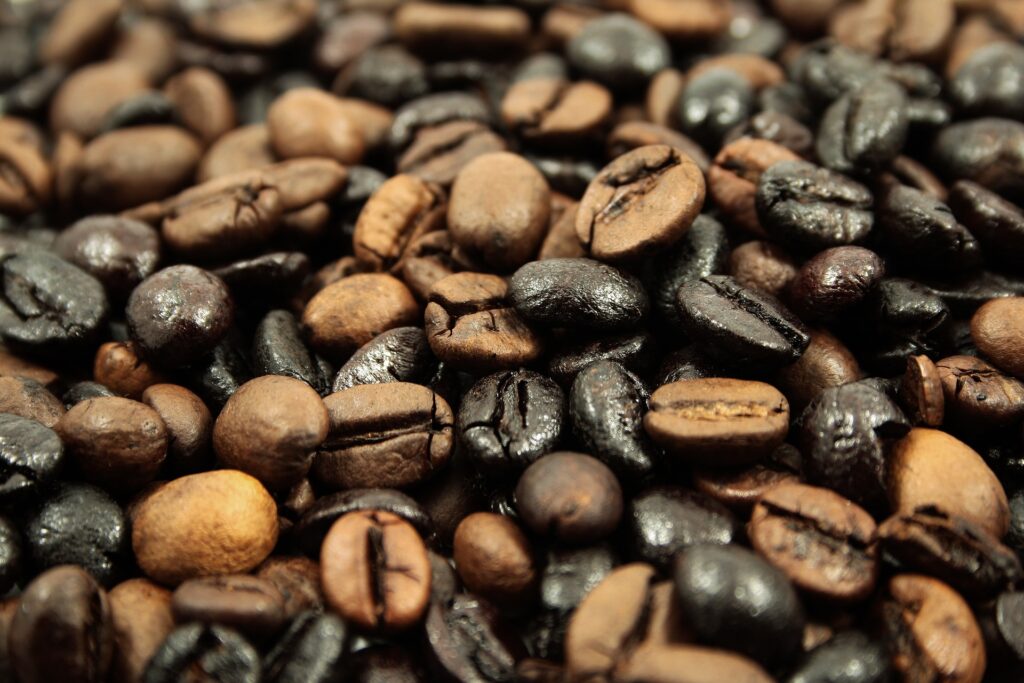Deciding between light and dark roast coffee isn't just about color. It affects how the coffee tastes, the best way to brew it, the temperature for brewing, how much caffeine it has, making crema in espresso, and more.
In this article, we'll look at the differences between these roasts, suggest the best brewing methods for each, and help you pick the roast that fits your taste best.
Table of Contents:
- What is Light Roasted Coffee
- What is Dark Roasted Coffee
- Taste Difference Between Light Roast and Dark Roast Coffee
- Perfect Brewing Method for Light and Dark Roast Coffee
- Ideal Brewing Temperatures for Light and Dark Roast Coffee
- Which one has More Caffeine
- Which one is Healthiest
- Frequently Ask Question
What is Light Roasted Coffee
Light roast coffee is lighter in color and taste compared to darker roasts. When coffee beans are roasted, they're heated to bring out different flavors. Light roast coffee is roasted for a shorter time at lower temperatures. This keeps the color light brown and preserves more of the bean's natural flavors.
It usually tastes softer and more subtle than darker roasts. You might notice flowery, fruity, or tea-like flavors in light roast coffee. It might also have more caffeine. Light roasting lets the natural flavors and smells of the coffee beans stand out. That's why people who like to taste the unique qualities of where the coffee comes from often choose light roast coffee.
What is Dark Roasted Coffee
Dark roast coffee means the beans were roasted longer, maybe just 1-2 minutes more. This makes the coffee darker and taste stronger. Dark roast coffee usually tastes more bitter and less acidic.
The beans might look shiny and oily because the sugars in them turn into caramel during roasting. Dark roast coffee can have flavors like smoky, chocolatey, or nutty. You might see it called ‘French Roast' or ‘Italian Roast'.
Taste Difference Between Light Roast and Dark Roast Coffee
 Have you seen the Coffee Taster’s Flavor Wheel? It's a tool for coffee makers to describe their coffees. We'll use it to talk about how light and dark roast coffees are different.
Have you seen the Coffee Taster’s Flavor Wheel? It's a tool for coffee makers to describe their coffees. We'll use it to talk about how light and dark roast coffees are different.
We'll explain the differences in taste, smell, and thickness.
But first, let's quickly define these terms:
Aroma is how coffee smells. There are lots of different smells in coffee, from light and fruity to burnt. Fresh coffee smells stronger than old coffee, and the smell gets stronger as the coffee gets darker.
Flavor is what makes coffee taste like coffee. It's a mix of taste and smell. When we talk about flavor, we should think about how strong, good, and interesting the taste and smell are together.
Body is how coffee feels in your mouth. Thick coffee is usually liked more, but even thin coffee can be good.
| Taste Descriptors | Light Roast | Dark Roast |
|
Aroma |
Floral, fruity, sweet |
Roasty, smoky, burnt |
|
Flavor |
Florals, berries, citrus, sour |
Nutty, cocoa, cooked fruit, caramelized |
|
Body |
Light, thin |
Bold, heavy, thick |
Lightly roasted coffee tastes bright, clean, and a bit sour, sometimes like tea. Depending on how it's processed, different flavors stand out. Naturally processed ones are more sour and sweet, while washed ones are flowery and clean-tasting.
Darker roasted coffee is stronger, with caramelized and smoky flavors from longer roasting. It's good with milk because its boldness cuts through the fat, letting you taste the coffee better.
Perfect Brewing Method for Light and Dark Roast Coffee
Light Roasted Coffee
For top-notch light roasted coffee, use a pour-over method with tools like a v60 or Fellow's Stagg brewer. This allows you to control time, temperature, and water-to-coffee ratio, enhancing flavors. Pour-overs bring out the best in light roasts, perfect for enjoying black.
Light roasted coffee as espresso is also delicious, with its bright, sour, and sweet notes. Adding milk is an option, but keep the ratio low (1:1 coffee to milk) to preserve the coffee's flavor.
Dark Roasted Coffee
For great-tasting dark roasted coffee, focus on grinding and brewing temperature. Use a coarser grind to avoid bitterness. Follow the roaster's serving suggestions, like using an espresso machine or filter, for the best flavor.
Start with pour-over brewing to enjoy all the flavors fully, then try other methods. For a stronger taste, use a ratio of 1 part coffee to 12-14 parts water in pour-over. Dark roasted coffee pairs well with milk, so consider a medium to dark roast if you enjoy milk in your coffee.
Ideal Brewing Temperatures for Light and Dark Roast Coffee
 Lighter roasts are best brewed at or close to boiling, while darker roasts should be brewed at cooler temperatures to avoid bitterness and highlight sweetness. Experiment with different temperatures using the same grind size to find the best taste, clarity, and aroma for your coffee.
Lighter roasts are best brewed at or close to boiling, while darker roasts should be brewed at cooler temperatures to avoid bitterness and highlight sweetness. Experiment with different temperatures using the same grind size to find the best taste, clarity, and aroma for your coffee.
| Roast Type | Optimal Brewing Temperature (Fahrenheit) | Optimal Brewing Temperature (Celsius) |
|
Light Roast |
199 – 205 |
93 – 96 |
|
Medium Roast |
194 – 200 |
90 – 93 |
|
Dark Roast |
188 – 194 |
87 – 90 |
Which one has More Caffeine
 When we need a quick energy boost, many of us turn to coffee because caffeine wakes up our brains. But do light and dark roasts have different amounts of caffeine?
When we need a quick energy boost, many of us turn to coffee because caffeine wakes up our brains. But do light and dark roasts have different amounts of caffeine?
